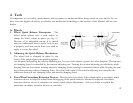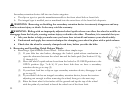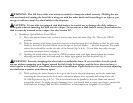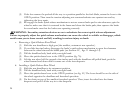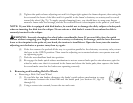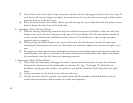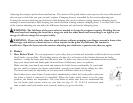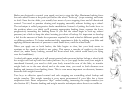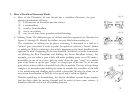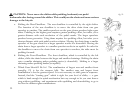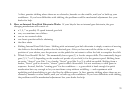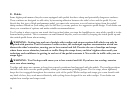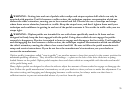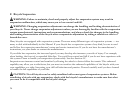
29
Brakes are designed to control your speed, not just to stop the bike. Maximum braking force
for each wheel occurs at the point just before the wheel “locks up” (stops rotating) and starts
to skid. Once the tire skids, you actually lose most of your stopping force and all directional
control. You need to practice slowing and stopping smoothly without locking up a wheel.
The technique is called progressive brake modulation. Instead of jerking the brake lever to
the position where you think you’ll generate appropriate braking force, squeeze the lever,
progressively increasing the braking force. If you feel the wheel begin to lock up, release
pressure just a little to keep the wheel rotating just short of lockup. It’s important to develop
a feel for the amount of brake lever pressure required for each wheel at different speeds and
on different surfaces. To better understand this, experiment a little by walking your bike and
applying different amounts of pressure to each brake lever, until the wheel locks.
When you apply one or both brakes, the bike begins to slow, but your body wants to
continue at the speed at which it was going. This causes a transfer of weight to the front
wheel (or, under heavy braking, around the front wheel hub, which could send you flying
over the handlebars).
A wheel with more weight on it will accept greater brake pressure before lockup; a wheel with
less weight will lock up with less brake pressure. So, as you apply brakes and your weight is
transferred forward, you need to shift your body toward the rear of the bike, to transfer
weight back on to the rear wheel; and at the same time, you need to both decrease rear
braking and increase front braking force. This is even more important on descents, because
descents shift weight forward.
Two keys to effective speed control and safe stopping are controlling wheel lockup and
weight transfer. This weight transfer is even more pronounced if your bike has a front
suspension fork. Front suspension “dips” under braking, increasing the weight transfer (see
also Section 4.F). Practice braking and weight transfer techniques where there is no traffic or
fig. 12
fig. 13
fig. 14



